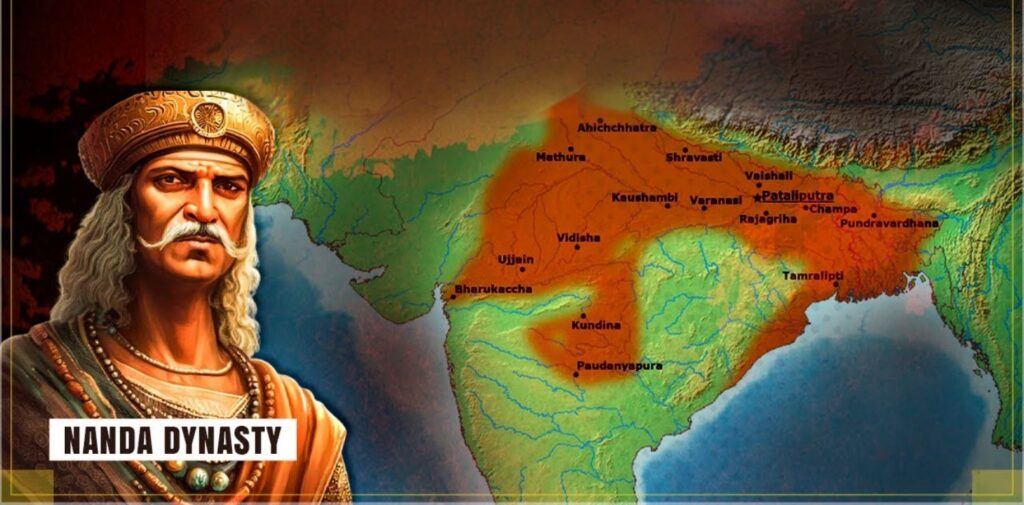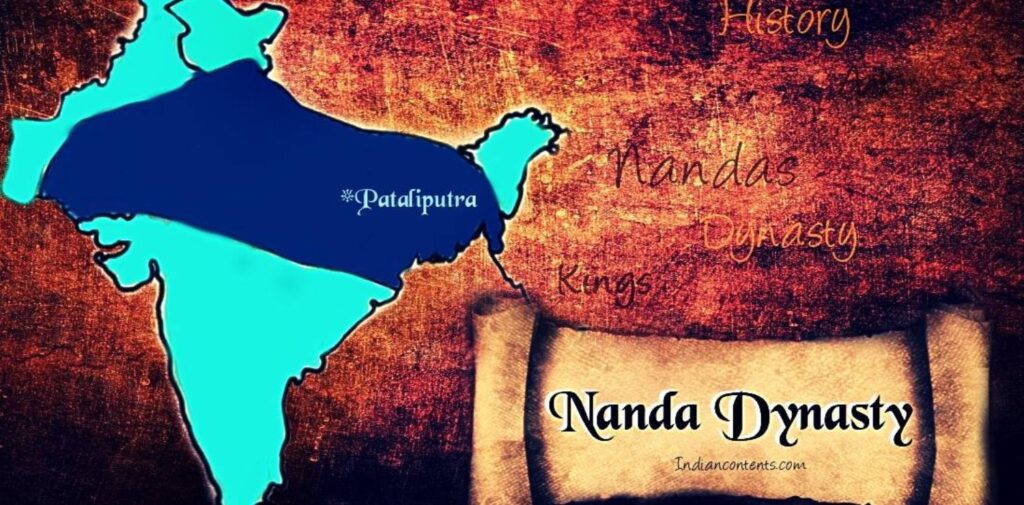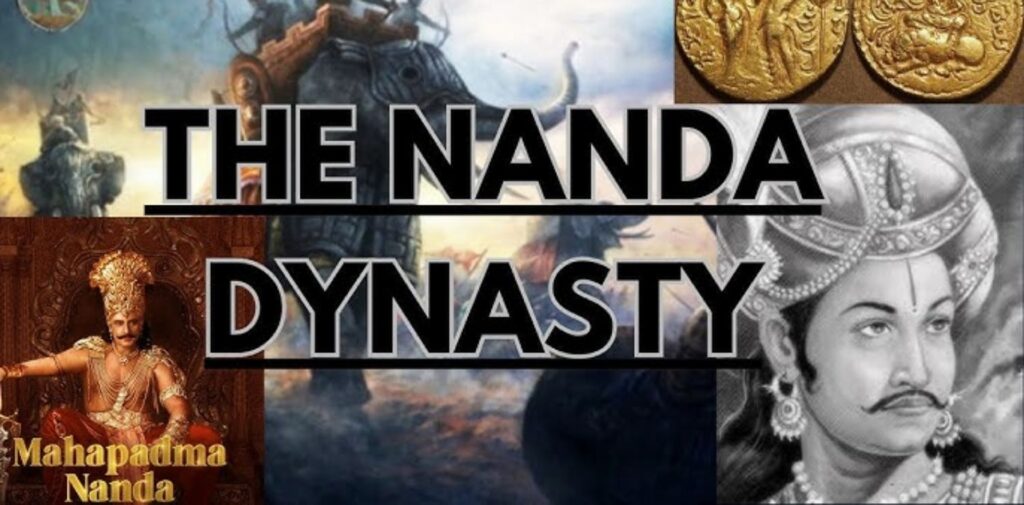Indian history is full of great kingdoms and rulers who shaped the country’s future. Among them, the Nandas played an important role in Indian history. They were not just ordinary rulers, but the ones who laid the foundation for one of India’s greatest empires—the Mauryan Empire.
Let’s take a journey through time and learn about the Nandas, their role in shaping Indian history, and how they helped pave the way for the Mauryan Empire.
Who Were the Nandas?
Nandas were an ancient dynasty that ruled over a large part of India during the 4th century BCE. They were not a royal family by birth like other dynasties. In fact, they started as a humble family and grew to power through a combination of smart strategies, hard work, and some lucky breaks.
The Nanda dynasty is most famous for ruling the region of Magadha, which is present-day Bihar in eastern India. Magadha was one of the most powerful kingdoms in ancient India. It was located in the fertile Ganges River plains, making it a very important area for agriculture and trade.

The Rise of the Nandas
Before the Nandas came to power, Magadha was ruled by several smaller kingdoms. The last king of the Haryanka dynasty in Magadha was King Bimbisara, who was followed by his son, Ajatashatru. However, after Ajatashatru’s rule, a period of chaos followed in Magadha. This is when Nandas came into the picture.
Chandragupta Nanda was the first ruler of the Nanda dynasty. He was not from a royal family, but instead, he was said to have been the son of a barber or a man from a low caste. However, despite his humble beginnings, he rose to power by his abilities and leadership skills. Chandragupta managed to overthrow the last king of the previous dynasty and establish the Nanda family on the throne.
Although the Nandas were not the greatest military conquerors, their rule helped stabilize the region and set the stage for greater empires to follow.
The Nanda Dynasty and Their Achievements
Even though Nandas ruled for a relatively short period, they made important contributions to Indian history. Let’s look at some of their most significant achievements:
- Strengthening the Economy: Nandas were skilled administrators. They worked hard to build a strong economy by improving agriculture, trade, and taxation. They controlled the rich lands of the Ganges River, which were highly productive for farming. This helped create a wealthier and more stable kingdom.
- Building Strong Armies: Nandas were known for having large and well-equipped armies. They used their strong military power to maintain control over their kingdom and keep invaders away. Even though Nandas weren’t as famous for military conquests as the Mauryas, they created the foundations for a powerful army that would later be used by the Mauryan Empire.
- Making Important Alliances: The Nandas also made several important political alliances with other kingdoms and tribes. They used these alliances to help strengthen their rule and secure their kingdom’s borders.
- A Strong Administration: One of the biggest contributions of Nandas was their ability to organize and manage the kingdom effectively. They created a strong central government, which helped in the smooth functioning of the empire. This was an important step towards the way later empires, like the Mauryas, would govern the Indian subcontinent.

The End of the Nanda Dynasty
After ruling for several generations, the Nanda dynasty came to an end with the rise of Chandragupta Maurya, the founder of the Mauryan Empire. The last Nanda ruler, Dhanananda, was a weak and unpopular king. He was known for being cruel and inefficient.
Chandragupta Maurya, who was a young and ambitious man, overthrew Dhanananda. With the help of his teacher and advisor, Chanakya (also known as Kautilya), Chandragupta was able to take control of Magadha. This marked the end of the Nanda dynasty and the beginning of the great Mauryan Empire.
The Nandas and the Mauryas: A Connection
The Nandas may have ruled for a short time, but their reign is considered very important in Indian history because it was the stepping stone to the rise of the Mauryan Empire, one of the greatest empires in ancient India.
Chandragupta Maurya, who established the Mauryan Empire, grew up under the Nanda dynasty. In fact, Nandas provided the early political and military infrastructure that the Mauryas used to expand their empire.
Chandragupta’s rise to power, supported by his brilliant advisor Chanakya, was made possible because of the strong foundations laid by Nandas. The Nandas helped to unify the region and strengthen its economy, which made it easier for Chandragupta Maurya to take control and later expand his empire.

The Legacy of the Nandas
Even though the Nanda dynasty itself did not last for long, their legacy continued through the Mauryan Empire. Here are a few ways the Nandas influenced the Mauryan Empire:
- Strengthened Administration: Nandas built a strong system of governance, which was later perfected by the Mauryas. They helped establish an efficient bureaucracy that was key to the functioning of the Mauryan Empire.
- A Larger Kingdom: Under the Nandas, the kingdom of Magadha expanded, setting the stage for the even larger Mauryan Empire. They controlled a vast area, which provided the Mauryas with a strong base to conquer other regions.
- Powerful Armies: Nandas created a strong military system, which was inherited by the Mauryas. The Mauryan Empire’s success in battles can be partly attributed to the strong army that had been developed by the Nandas.
Conclusion: The Nandas and Indian History
The Nandas may not be as famous as the Mauryas, but their role in Indian history is crucial. They played a major role in the political and economic development of the Indian subcontinent. By strengthening the kingdom of Magadha and laying the groundwork for an efficient government and military system, They set the stage for the rise of the Mauryan Empire.
Without Nandas, the Mauryas may not have been able to achieve the greatness they did. Thus, the Nandas can be considered the unsung heroes who paved the way for one of the most powerful empires in ancient India.
So, the next time you hear about the great Mauryan Empire, remember that they played a key role in its rise. They were the bridge that connected the small kingdoms of the past to the mighty empire that would go on to shape India’s future for centuries.




